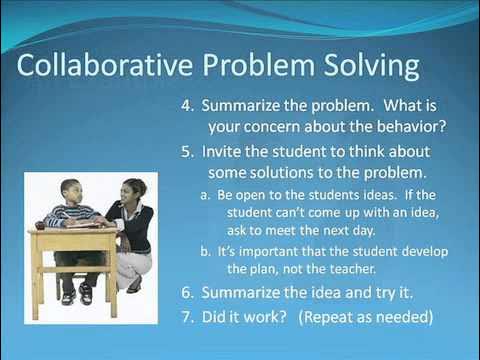Trauma Module 6: Self-Regulation
Summary
TLDRThis video explores the significance of self-regulation in students, particularly those affected by trauma. It highlights the importance of maintaining a calm, focused state for learning and social engagement. Strategies for fostering self-regulation include co-regulation with calm adults, creating a supportive classroom environment, and using tools like fidget boxes and quiet spaces. The video emphasizes the role of early emotional support, language development, and coping strategies such as breathing, self-talk, and visualization. By teaching students self-regulation techniques, educators can help them overcome stress and thrive academically and socially.
Takeaways
- 😀 Regulation is the ability to maintain calmness, focus, and alertness, which is essential for learning and social engagement.
- 😀 Dysregulation can occur when a child is stressed beyond their tolerance, leading to emotional reactivity, impulsivity, or underarousal.
- 😀 Trauma can trigger dysregulated states, often in response to sensory inputs such as voice tone, touch, or visual reminders.
- 😀 Early childhood experiences, especially caregiver responsiveness, teach infants self-regulation skills through soothing actions like holding and rocking.
- 😀 Co-regulation, where a calm adult helps a student regulate, is a powerful tool to support emotional and behavioral control.
- 😀 Creating a safe and predictable environment in the classroom helps students feel secure and supports self-regulation.
- 😀 Providing quiet spaces with calming tools, such as pillows, fidget boxes, or headphones, can help students manage overstimulation and regulate their emotions.
- 😀 Strategies to teach self-regulation should be practiced when students are calm, so they can use these tools when crises arise.
- 😀 Breathing exercises and self-talk can be effective tools for calming students, improving focus, and building self-esteem.
- 😀 Visualization and activities such as drawing, music, or exercise can provide emotional distraction and help students self-regulate.
- 😀 Trauma-informed practices benefit all students by promoting brain-friendly, affirming, and growth-oriented approaches to learning and behavior management.
Q & A
What is self-regulation and why is it important for the learning process?
-Self-regulation is the ability to maintain a state of calmness, focus, and alertness. It is important because it helps students process information, think clearly, interact with others, and learn effectively. Being well-regulated enables children to stay neither overly aroused nor under aroused, which supports their overall well-being and learning capabilities.
How does dysregulation affect students, especially those who have experienced trauma?
-Dysregulation, the inability to maintain inner calmness and focus, can lead to increased emotional reactivity, impulsivity, or mental and physical inertia. For students with trauma, their dysregulation may be triggered by sensory inputs related to past traumatic experiences, making it difficult for them to concentrate or engage appropriately.
What role does co-regulation play in helping students self-regulate?
-Co-regulation involves sharing calmness and emotional control with the student. When an adult is calm, non-threatening, and uses a relaxed tone and body language, it helps the student regulate their own emotions and behaviors. Co-regulation can be a powerful tool to guide students back to a regulated state.
Why is early intervention important when a student begins to become dysregulated?
-Early intervention is crucial because addressing the signs of dysregulation at the start can prevent the situation from escalating. Recognizing early signs such as body language, facial expressions, or tone of voice allows teachers to intervene gently and restore calm before the student becomes overwhelmed.
What is the purpose of 'time-in' and how does it help students regulate?
-'Time-in' is a strategy where a student spends time with a calm, supportive adult. This time is not a punishment but a chance to re-establish regulation through empathy, connection, and reassurance. It helps students feel safe, supported, and learn how to self-regulate when faced with stress.
How can teachers create a classroom environment that promotes self-regulation?
-Teachers can promote self-regulation by creating a structured, predictable environment with clear routines. Calm music, quiet periods, dimmed lights, and a consistent use of signals (like a chime) can support the regulation of the whole class. Predictability in transitions and a safe, quiet space for students to withdraw also help students manage their emotions and stay regulated.
What are fidget boxes, and how can they assist in self-regulation?
-Fidget boxes are containers filled with materials like coloring books, stuffed animals, squishy balls, or word searches that help students calm down and self-regulate. These items can be particularly helpful for students who need sensory input to manage anxiety, over-arousal, or stress.
Why is slow breathing an effective strategy for regulation?
-Slow breathing is effective because it helps calm the body by slowing the heart rate, reducing blood pressure, and slowing respiration. When students engage in slow, controlled breathing, it helps them regain emotional balance and focus, making it easier for them to manage stress and stay calm.
How can teachers help students change negative self-talk?
-Teachers can help students change negative self-talk by providing positive, restorative messages and concrete examples of strengths and capabilities. Pre-teaching positive mantras such as 'I can handle this' can also encourage students to challenge and replace self-defeating thoughts.
What is the role of visualization in self-regulation?
-Visualization, such as imagining a special place, can help students calm themselves and shift their emotional state. This technique encourages relaxation and emotional control, helping students regulate their mood and reduce stress.
Outlines

Esta sección está disponible solo para usuarios con suscripción. Por favor, mejora tu plan para acceder a esta parte.
Mejorar ahoraMindmap

Esta sección está disponible solo para usuarios con suscripción. Por favor, mejora tu plan para acceder a esta parte.
Mejorar ahoraKeywords

Esta sección está disponible solo para usuarios con suscripción. Por favor, mejora tu plan para acceder a esta parte.
Mejorar ahoraHighlights

Esta sección está disponible solo para usuarios con suscripción. Por favor, mejora tu plan para acceder a esta parte.
Mejorar ahoraTranscripts

Esta sección está disponible solo para usuarios con suscripción. Por favor, mejora tu plan para acceder a esta parte.
Mejorar ahora5.0 / 5 (0 votes)






